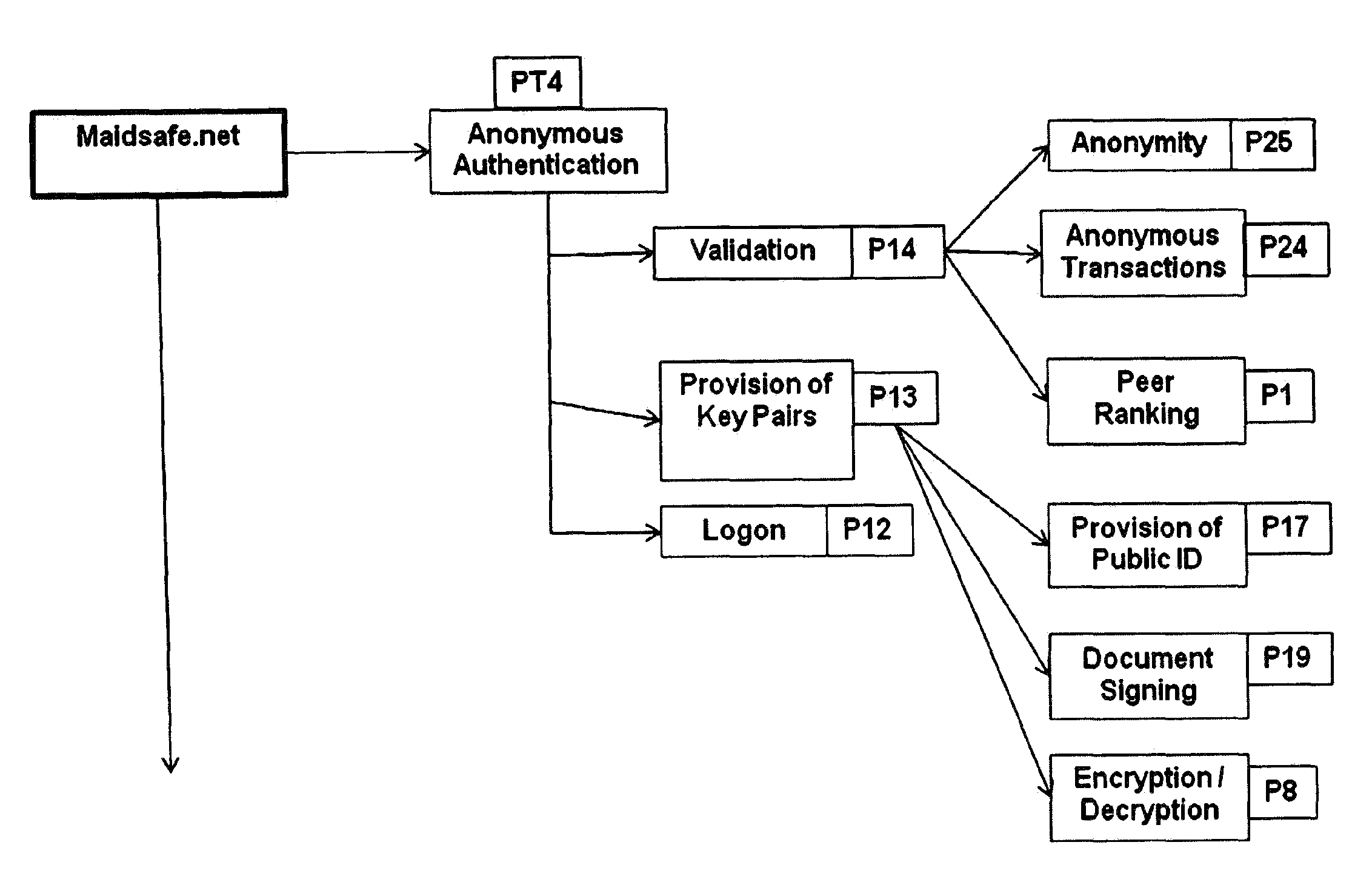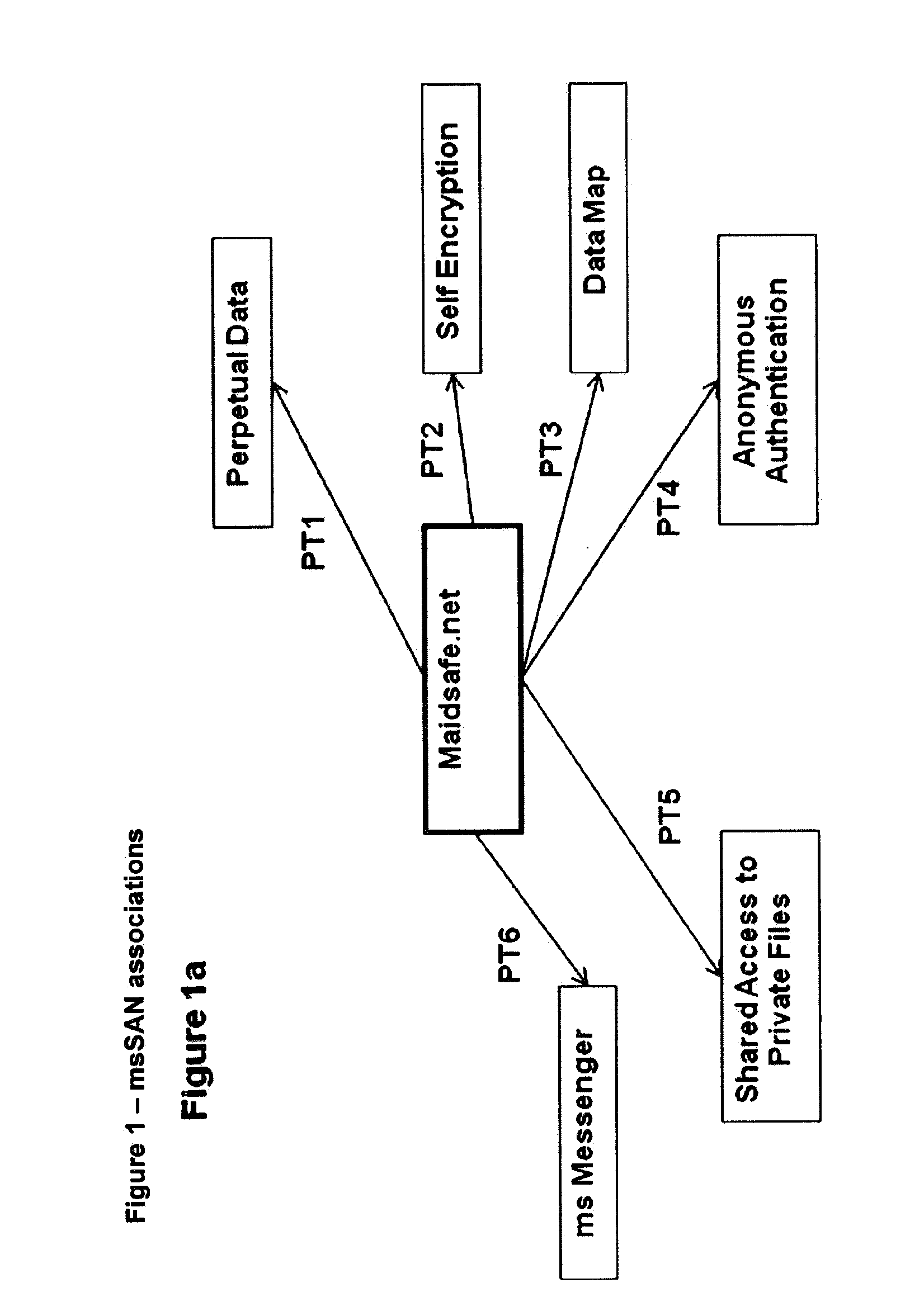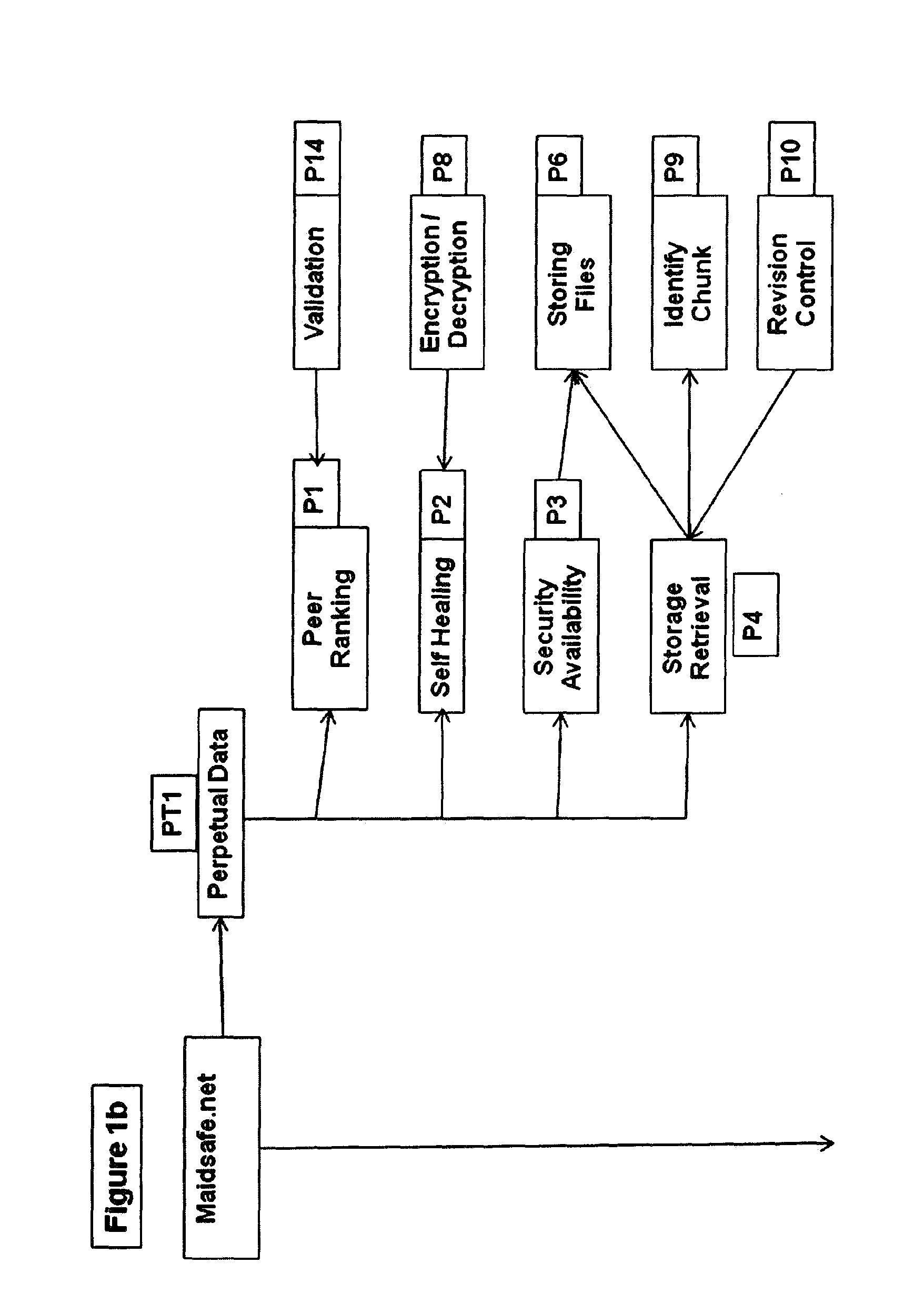Method for storing data on a peer-to-peer network
a peer-to-peer network and data storage technology, applied in the direction of user identity/authority verification, digital transmission, electrical equipment, etc., can solve the problems of increasing complexity of rerouting algorithm and alarm collection time, requiring a great deal of administration, and opening the system to attack, etc., to achieve simple granular accessibility and simple granular accessibility
- Summary
- Abstract
- Description
- Claims
- Application Information
AI Technical Summary
Benefits of technology
Problems solved by technology
Method used
Image
Examples
first embodiment
[0346]FIG. 5 illustrates a flow chart of data assurance event sequence in accordance with first embodiment of this invention
second embodiment
[0347]FIG. 6 illustrates a flow chart of file chunking event sequence in accordance with second embodiment of this invention
[0348]FIG. 7 illustrates a schematic diagram of file chunking example
[0349]FIG. 8 illustrates a flow chart of self healing event sequence
[0350]FIG. 9 illustrates a flow chart of peer ranking event sequence
[0351]FIG. 10 illustrates a flow chart of duplicate removal event sequence
[0352]With reference to FIG. 5, guaranteed accessibility to user data by data assurance is demonstrated by flow chart. The data is copied to at least three disparate locations at step (10). The disparate locations store data with an appendix pointing to the other two locations by step (20) and is renamed with hash of contents. Preferably this action is managed by another node i.e. super node acting as an intermediary by step (30).
[0353]Each local copy at user's PC is checked for validity by integrity test by step (40) and in addition validity checks by integrity test are made that the ot...
PUM
 Login to View More
Login to View More Abstract
Description
Claims
Application Information
 Login to View More
Login to View More - R&D
- Intellectual Property
- Life Sciences
- Materials
- Tech Scout
- Unparalleled Data Quality
- Higher Quality Content
- 60% Fewer Hallucinations
Browse by: Latest US Patents, China's latest patents, Technical Efficacy Thesaurus, Application Domain, Technology Topic, Popular Technical Reports.
© 2025 PatSnap. All rights reserved.Legal|Privacy policy|Modern Slavery Act Transparency Statement|Sitemap|About US| Contact US: help@patsnap.com



